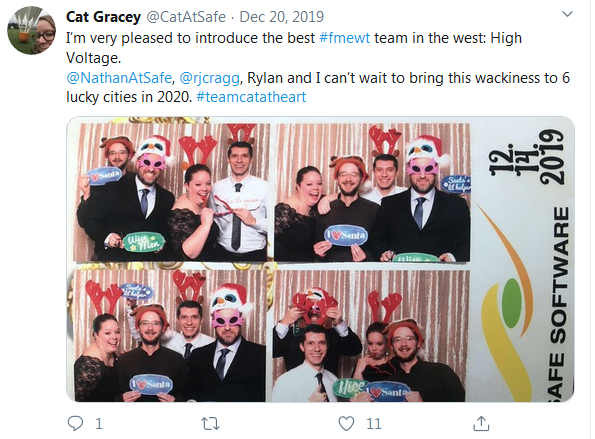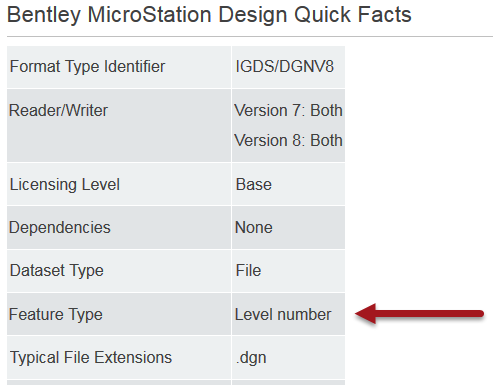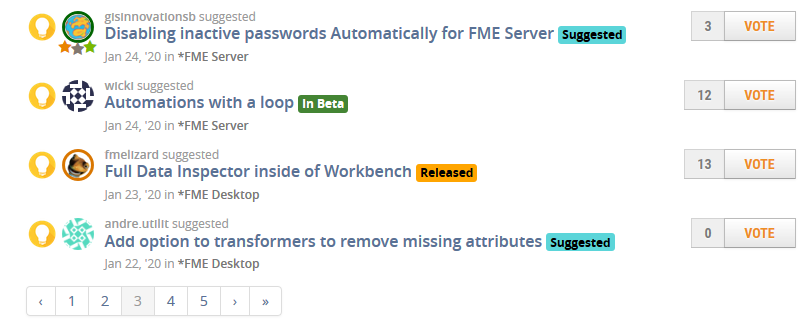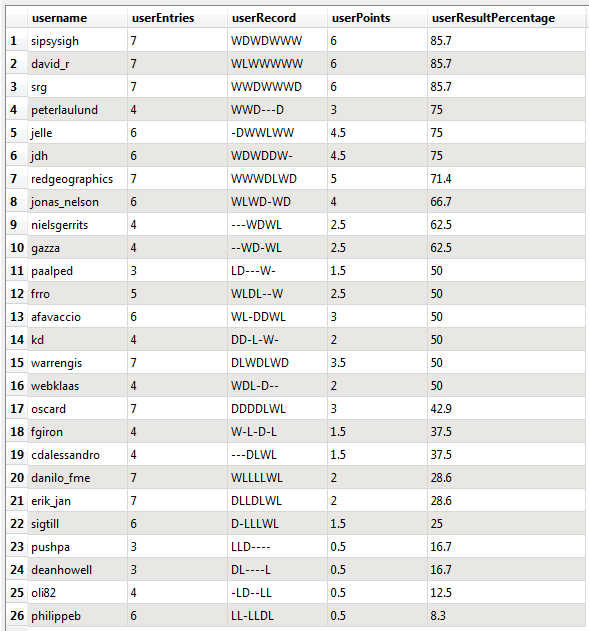Hi FME'ers,
Firstly, apologies for not posting yesterday, but I got caught up in a training course (and also forgot)!
Anyway, this week's challenge was to beat Amanda Schrack, a technical writer in Safe's marketing team. A mixture of tech and product knowledge. How could she lose? Well.. let's see if she did, but first the correct answers...
Answers1) There are two types of people who use FME. Who are they?
- The Creator and the Inspector
- The Author and the User
- The Reader and the Writer
- The Maker and the Consumer
- The Bold and the Beautiful
A question of FME terminology, eh? The answer would be authors and users. It's very interesting to me that the person who authors a workspace is very often not the same person that uses it. In fact, given that running a workspace on FME Server can be completely hidden behind a web page, I imagine there are thousands of FME users who've never heard of FME at all!
It's not The Bold and the Beautiful, which is a soap opera that I wish I'd never heard of!
Amanda's Answer: The Author and the User (Correct)
2) My colleague Cat (CatAtSafe) asked Twitter for suggestions for a team name for the World Tour. What did they eventually pick?
- Team SOPPY (SFO, ORD, PHX, PDX, YVR)
- Team High Voltage
- Team Tea-riffic
- Team Top Guns
- Team Cat-astrophic!
Although you all voted for "Team Cat" it turns out that is “kinda self-centred”, “not very sporting”, and “obviously rigged”. So in the end it became Team High Voltage:

I just think they're lucky it didn't end up "Team Catty McCatFace"!
Amanda's Answer: Team High Voltage (Correct)
3) Which of these formats arranges its data across feature types called Levels?
- Google Cloud SQL Spatial
- Bentley MicroStation Design (V8)
- Esri Geodatabase
- Adobe PDF
- AIXM (Aeronautical Information Exchange Model)
The answer here is MicroStation. Feature types is an FME term for how a format subdivides its data. Databases nearly always divide their data by tables. Mapping formats usually divide their data into layers. But MicroStation is the only format I know that uses levels.
How would you find out if you didn't know this? Why, you'd look it up in the FME Readers and Writers manual in the Quick Facts table:

I think the doc needs updating, since you can have names as well as numbers for a level, so I'll get on to that.
Amanda's Answer: Bentley MicroStation Design (V8) (Correct)
4) When our users read data from Shapefile, which format do they most commonly write it to?
- Shapefile
- Geodatabase
- AutoCAD DWG
- Google Earth
- XML
Amanda thought this question was sneaky, I thought you'd probably get it. To be fair, a lot of you did... but a lot of you didn't!
In fact, Shapefile to Shapefile is the most common translation in all of FME. It proves people use FME for data transformation and not just format translation. It also proves that, as much as you'd like to think users are moving data out of Shapefile, that's not true.
Amanda's Answer: Shapefile (Correct)
5) Which community idea was last week added to FME Server automations in 2020 betas?
- Parallel Processing
- Loops
- Medical Pager Alerts
- Breakpoints
- Kitchen Appliance Alerts
This was a harder question, but I tried to make it easier by putting in some silly answers. Not even the person who thought FME users were "the bold and the beautiful" thought we'd added kitchen appliance alerts.
The answer is loops! The easiest method to find out would have been to view the list of community ideas, with sorting set to "last updated"

Of the other sensible answers, parallel processing is already built in to automations: you can have multiple streams and multiple connections in a stream, and they can be made to trigger jobs simultaneously. Breakpoints... well that would be interesting. If you think it would be useful, then maybe you can make an idea for it too?
Now, about those kitchen appliance alerts...
Amanda's Answer: Loops (Correct)
6) In the history of FME development, Transformers developed from Factories and Functions. What did Factories and Functions develop from?
- Brewers
- Clumpers
- Squishers
- Mashers
- Pounders
This was an interesting tidbit that I picked up during product testing last week, when @daleatsafe gave a lunchtime talk on the history of FME. I thought I already knew most of it, but I didn't know this!
Mashers were an experiment in putting processing into a format translation, basically making a mash-up. If I have it correctly, Don further developed the idea on to factories and functions, which were actually used as the first objects in Workbench (did you know that?) Then our chief scientist Kevin suggested the idea of transformers and we've never looked back.
Amanda's Answer: Brewers (Incorrect)
ScoresIf you were following along, you'll have noticed Amanda got a daunting 5/6. Actually, if you took the quiz then I suppose you already knew that!
Let's see the general quiz info:
- Quiz Week: 14 (Feb 3/2020)
- Number of Entries: 33
- Best Score: 6
- Worst Score: 1
- Average Score: 3.79
- Easiest Question: 3 (27)
- Hardest Question: 6 (12)
So tougher (av 3.79) but even though question 6 was the hardest, a good number of you still got it. What surprised me is that question 3 (MicroStation levels) was the easiest, and not question 1 (Authors/Users).
Did that help you overall?
- Beat Amanda: 4
- Equalled Amanda: 6
- Were Beaten by Amanda: 23
Nope. Sorry folks, Amanda turned the tables on you after last week's defeat. The overall score is now:
- Users 3 Safers 4
And to finish up, here's the list of individual user records. We have (gasp) a new name at the top of the leaderboard! Well done @sipsysigh and to @david_r for a 5-week win streak. Also to @frro for getting just your second win. Keep it up.










